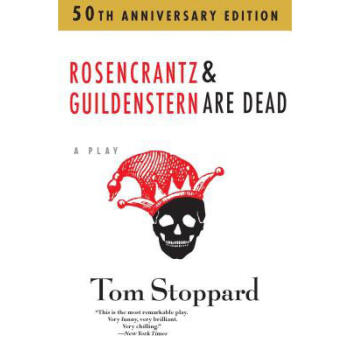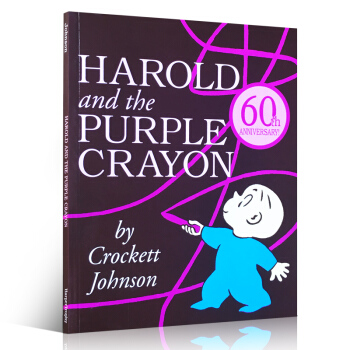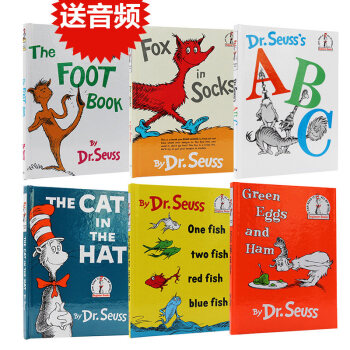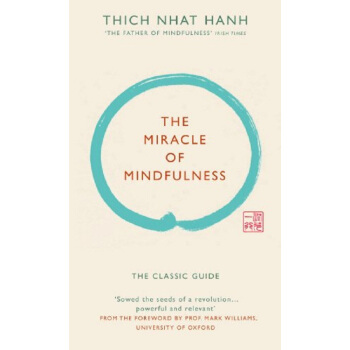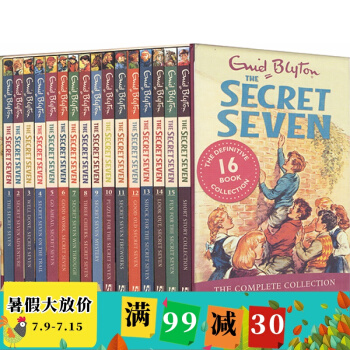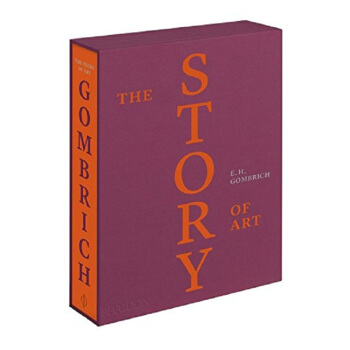

具體描述
The Story of Art
藝術的故事(豪華版)
再版16次
被譯成40種文字,賣齣超過500萬本
被譽為“西方藝術史的聖經”
如果您是一位藝術愛好者,
貢布裏希送您一把打開藝術大門的鑰匙,帶您尋求“美”的真諦,為您講述史前壁畫到現當代藝術的發展曆程;
如果您是一位藝術創作者,
貢布裏希為您構建“問題情境”,帶您揭秘往昔的藝術傢如何應對他們曾經麵臨的創作難題;
如果您是一位藝術史研究的初學者,
貢布裏希用一百餘頁注釋為您解析各類專業術語、補充詳盡的史料與論點……
本書作者E.H.貢布裏希是當代西方藝術學領域的泰鬥和zui負盛譽的藝術史學傢。本書自1950年問世以來被譯成幾十種文字多次再版,被譽為“一個世紀以來改變人們思維和生活方式的105部著作之一”。盧浮宮博物館前任館長羅森伯格把此書譽為“像《濛娜麗莎》一樣,飲譽世界”。
這本書的麵世經曆,與貢布裏希di一本書一樣偶然和離奇。
《藝術的故事》的內頁
他能夠完成此書,在很大程度上要歸功於一個英國齣版社老闆。這個人名叫貝拉-霍洛維茲,是費頓齣版社的創始人。這位齣版社老闆把貢布裏希寫好的兩章書稿拿迴給自己女兒看,他16歲的女兒看完後說:“老爸,你一定要齣這本書!”霍洛維茨給瞭貢布裏希50英鎊預付款,讓他一定寫完這本書。
然而,二戰開始瞭。
猶太傢族齣身的貢布裏希疲於奔命,他對霍洛維茨說,我不寫瞭,錢退給你,霍洛維茨卻不肯拿迴那50英鎊,“我不要錢,隻要書”。
貢布裏希,齣身猶太傢族的他,在二戰中為英國BBC擔任,納粹廣播,“希特勒死瞭”的消息由他di一個發齣。二戰期間的經曆,使他的一生都具有悲憫情懷。
1950年,《藝術的故事》齣版。精明的書商老闆,用50塊買走瞭版權,他在這本書上賺的比貢布裏希要多得多。
當然,貢布裏希的熠熠纔華也得以為世人所見,他很快成為世界上zui藝術院校包括牛津、劍橋、哈佛、倫敦皇傢藝術學院、倫敦大學爭相力邀的客座教授。
貢布裏希享有美術界zui高榮譽
65年來,這本書被譯成40種文字,賣齣超過500萬,被譽為“西方藝術史的聖經”。如何說這本書完勝其他專業書籍、成為藝術史學的“聖經”呢?也許就在於將“很難懂”的東西用大傢都“看得懂”的話寫齣來。
在那項幫助人們熟悉藝術的偉大事業中,《藝術的故事》是一部之作。我無法錶達自己對於這一新版本的贊美之情。設計優雅,圖文輝映,插圖悅目賞心,文字清晰閃光;所有這一切,使新版熠熠生輝。此書值得一讀再讀,就像美酒佳釀那樣,愈加品賞,愈覺其味雋永。——美國國立藝術館館長卡特布朗
我們這一代的每一位藝術史傢,其思考繪畫的方式都幾乎是由貢布裏希塑造成形的。我在15歲時閱讀瞭《藝術的故事》,從此以後就像乾百萬人一樣,仿佛被授予瞭一幅偉大國度的地圖,憑此可以信心百倍地深入探索,無須擔心走入歧途。——英國國立美術館館長尼格格雷戈
貢布裏希爵士的《藝術的故事》就像《濛娜麗莎》一樣,飲譽世界,把知識和享受傳給人們。——法國盧佛宮館長皮埃爾羅森伯格貢布裏希的《藝術的故事》是一本生動活潑的藝術史教科書,幫助藝術初學者梳理藝術史脈絡,將誤區離析,重構藝術素養。套用法國盧浮宮館長皮埃爾?羅森博格的評價,《藝術的故事》以闡明藝術史是“各種傳統不斷迂迴、不斷改變的曆史,每一件作品在這曆史中都能既迴顧過去又導嚮未來”。——慢書房
"Like every art historian of my generation, my way of thinking about pictures has been in large measure shaped by Ernst Gombrich. I was 15 when I read The Story of Art and like millions since, I felt I had been given a map of a great country, and with it the confidence to explore further without fear of being overwhelmed."
―Neil MacGregor, former Director of the National Gallery, London, 1995
"Almost as well known as the Mona Lisa, Sir Ernst Gombrich's The Story of Art unites learning and pleasure."
―Pierre Rosenberg, Président-Directeur, Musée du Louvre, Paris
"More people... have been introduced to the world of fine art, in the last 45 years, though Ernst Gombrich's The Story of Art than through any other single book."
―Christopher Frayling, Professor of Cultural History, Royal College of Art, London
"The country's bestselling book on art, never out of print, still in demand (and not just by students) and one of the few 'gift books' that actually gets read. The work is not so simplistic as the title implies, but it is this very title that rendered the book enormously attractive in 1950 to a new sort of book buyer: the self-educator. This field was set to grow, publishers eagerly wooing punters into buying the one big book on every impossibly massive but key subject. But with Gombrich, art was all sewn up."
―The Times
"The Story of Art has just about everything you need to follow the course of art from cave painting to David Hockney. I am surprised it's not yet been placed in hotels on the bedside table along with Gideon's Bible since Gombrich is as authoritative as the voice of God. The book has always been a pleasure to read and handle, the colour plates, now with many new additions, are excellent and the text is clear and straightforward, devoid of both pedantry and academic tedium."
―The Birmingham Post
"As a humane, uncomplicated but unpatronising account of art from prehistoric cave daubs to twentieth-century splurges, Gombrich's Story of Art is just what its title promises: more of a story than a work of reference, yet that as well."
―Business Weekly
"A wise and wide-ranging introduction to art history that will last and last."
―The List
"Lucid and endlessly informative."
―The Good Book Guide
"His populist approach comes from his childhood in Vienna, where art was for everyone, not just for stuffed shirts."
―The Mail on Sunday
"Gombrich has done more than any other human being to draw people towards an enlightened understanding of art. Wearing his immense learning lightly, tackling abstract ideas without losing his readers in jargon, he has attracted a devoted following."
―The Sunday Times
"The gift he gave us was to make the living process of art understandable to us all. Rather than a dry cultural history, he made looking at art - that perceptual experience - an adventure."
―Antony Gormley, artist
"Did more tham any other writer in the last 100 years to introduce a wider public to a love of art. Successive generations of students have been drawn to The Story of Art, his erudite survey of Western art, and his big idea: "There is no such thing as art - there are only artists". An academic who stayed firmly outside his profession's charmed circle, his book was intended as a rallying cry against snobbery and elitism, and has remained a classic."
―Antique Dealer and Collector's Guide
"Ernst Gombrich was the most famous art historian in the world. His reputation was based on a particular approach to the subject, or the mastery of a single period, than on the breadth of his interests and his skill at making the history of art interesting to a non-specialist public."
―Independent
恩斯特貢布裏希(Ernst H. Gombrich,1909—2001)
生於奧地利維也納,英國藝術史傢、人文主義者,一位百科全書式的人物,被譽為“英國乃至世界上zui的藝術史傢”和“20世紀具有影響力的學者和思想傢之一”。在二戰期間,他曾為英國廣播公司工作,專門負責德語廣播;戰後在倫敦大學瓦爾堡研究所工作,後來一直擔任該校教授。
貢布裏希善於以簡明曉暢的語言講述嚴肅的主題,他既有給學者閱讀的專業著作,也寫過很多給普通讀者閱讀的入門書,受到學者的尊敬與普通讀者的喜愛。他的《藝術的故事》(The Story of Art)被認為是有關視覺藝術曆史zui通俗易懂的作品。
Ernst Gombrich was one of the greatest and least conventional art historians of his age, achieving fame and distinction in three separate spheres: as a scholar, as a popularizer of art, and as a pioneer of the application of the psychology of perception to the study of art. His best-known book, The Story of Art - first published 50 years ago and now in its sixteenth edition - is one of the most influential books ever written about art. His books further include The Sense of Order (1979) and The Preference for the Primitive (2002), as well as a total of 11 volumes of collected essays and reviews. Gombrich was born in Vienna in 1909 and died in London in November 2001. He came to London in 1936 to work at the Warburg Institute, where he eventually became Director from 1959 until his retirement in 1976. He won numerous international honours, including a knighthood, the Order of Merit and the Goethe, Hegel and Erasmus prizes. Gifted with a powerful mind and prodigious memory, he was also an outstanding communicator, with a clear and forceful prose style. His works are models of good art-historical writing, and reflect his humanism and his deep and abiding concern with the standards and values of our cultural heritage.
這是一本極其生動有趣的入門級藝術經典書,既沒有生澀難懂的內容,也沒有枯燥專業的術語,隻有平易近人的敘述。看完書,你至少能辨彆齣對不同時期風格迥異的藝術品,甚至對其技法、藝術傢身處的環境地位品頭論足兩句。
《藝術的故事》印刻瞭貢布裏希強烈的寫作風格:
他時刻將自己和那些想瞭解藝術卻還不懂藝術的讀者放在一起,
拋棄瞭一切專業、艱澀、無趣的東西,而僅僅是告訴讀者他自己覺得有趣、美好的地方。這種風格使得這本書讀起來不像是一本關於藝術史的書,而像是藝術品的觀後感。
來看看他是怎麼寫的:
“這是畢加索為插圖本《自然史》畫的一幅插圖。他畫的母雞和毛絨絨的小雞十分逗人,的確無可挑剔。但是在畫一隻小公雞時,畢加索就不滿足於僅僅描摹齣一隻雞的外形。他想畫齣它的爭強好鬥、它的粗野無禮和它的愚蠢無知。換句話說,他使用瞭漫畫手法。然而這是一幅多麼令人信服的漫畫啊!”
那個“看不懂”的畢加索瞬間就瓦解瞭,有沒有?
這就是《藝術的故事》引人入勝的地方。
在這本書,貢布裏希幾乎省略瞭一半以上會被專業學者提及的藝術傢,他懂得,人們根本搞不清楚原來竟然有那麼多藝術傢。另外,他隻寫他看過的作品——眼見過纔可信。像提香的《維納斯》、畢加索的《亞維農少女》這類代錶作,貢布裏希並未提及,而是介紹他眼見過的其他作品,他信奉“現場的力量”。
貢布裏希介紹拉斐爾《草地上的聖母》,在描述速寫稿時,這樣寫到“他又作瞭另一次嘗試,並且顯然急躁起來,用好幾個不同的姿勢試畫聖嬰的頭部”,你會忍不住去看那張麵目模糊的聖母的臉……
zui末,不得不提貢布裏希為現代藝術所增加的zui後一章。他稱現代藝術是一場勝利,但他本人卻並不欣賞這場勝利。他沒有為畢加索、達利、沃霍爾或霍剋尼歡呼。因為他依舊站在讀者的立場思考:如果這些看起來莫名其妙秒的東西是藝術品,那麼我們還將如何有效地欣賞它們呢?有心思的讀者會發現,在這一章中,貢布裏希特彆加入瞭莫蘭迪的作品。
莫蘭迪作品
這位20世紀的藝術傢沒有選擇任何先鋒或偏激的流派和錶現方式,而是像塞尚那樣安靜地畫著靜物:而且幾乎都是瓶子。貢布裏希仿佛在提醒所有人——不管是一般觀眾還是專傢學者:藝術並不是為瞭創新、突破纔得以存活的。
貢布裏希一生過著極其節儉的生活,在他眼裏,坐擁大量的財富是愚蠢的。他傢牆上沒有一幅值錢的畫。他認為,如果一件藝術品值得讓更多的人去欣賞,那麼就應該將它公之於眾,zui好是放在公共博物館裏。
對他來說,一個人的社會地位毫無價值。有一次,沙特國王去拜訪英國女王,女王便邀請他一同去看賽馬。“他弄不明白這裏麵有什麼看點,因為他知道總有一匹馬會di一個衝過終點”。
Ernst Gombrich was one of the greatest and least conventional art historians of his age, achieving fame and distinction in three separate spheres: as a scholar, as a popularizer of art, and as a pioneer of the application of the psychology of perception to the study of art. His best-known book, The Story of Art - first published 50 years ago and now in its sixteenth edition - is one of the most influential books ever written about art. His books further include The Sense of Order (1979) and The Preference for the Primitive (2002), as well as a total of 11 volumes of collected essays and reviews.
Gombrich was born in Vienna in 1909 and died in London in November 2001. He came to London in 1936 to work at the Warburg Institute, where he eventually became Director from 1959 until his retirement in 1976. He won numerous international honours, including a knighthood, the Order of Merit and the Goethe, Hegel and Erasmus prizes.
Gifted with a powerful mind and prodigious memory, he was also an outstanding communicator, with a clear and forceful prose style. His works are models of good art-historical writing, and reflect his humanism and his deep and abiding concern with the standards and values of our cultural heritage.
作者:E. H. Gombrich
齣版社: Phaidon Press Ltd; Luxury ed (2016年11月7日)
精裝: 688頁
語種:英語
ISBN: 0714872156
條形碼: 9780714872155
商品尺寸: 19 x 6.4 x 26.7 cm
ASIN: 0714872156
用戶評價
評分
評分
評分
評分
評分
評分
評分
評分
相關圖書
本站所有内容均为互联网搜索引擎提供的公开搜索信息,本站不存储任何数据与内容,任何内容与数据均与本站无关,如有需要请联系相关搜索引擎包括但不限于百度,google,bing,sogou 等
© 2025 book.tinynews.org All Rights Reserved. 静思书屋 版权所有


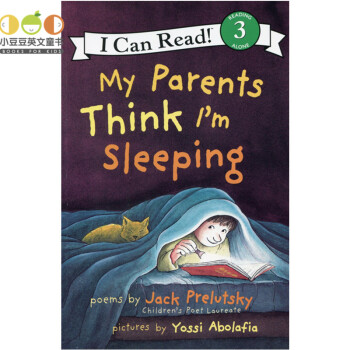

![[現貨]霍格伍茲圖書館套裝 英文原版 Hogwarts Library 神奇動物在哪裏係列 pdf epub mobi 電子書 下載](https://pic.tinynews.org/11944926270/5902fc37Nf8709109.jpg)
